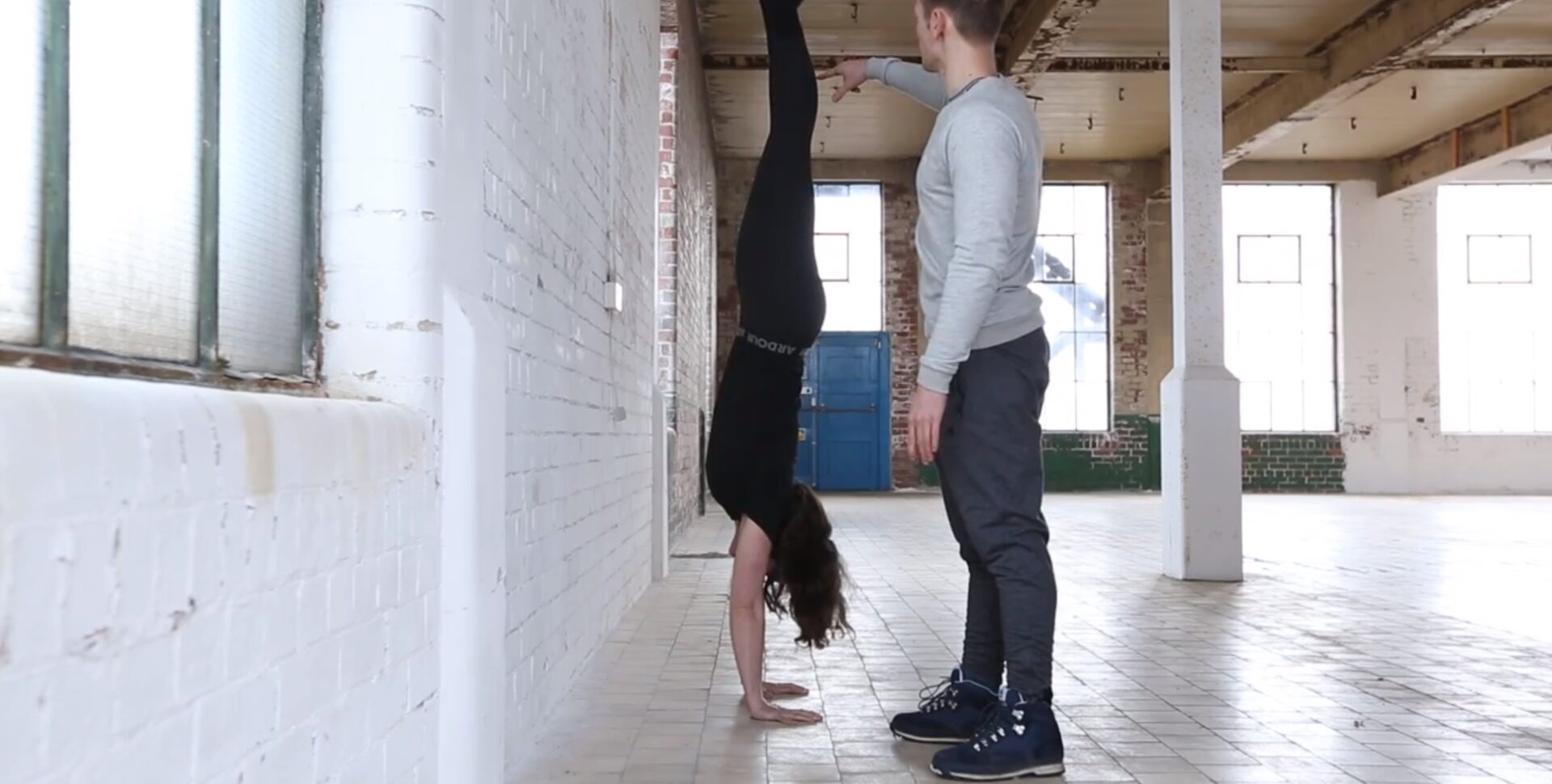Bridging the gap from a wall handstand to a freestanding one can be an elusive process. For some people this transition happens quickly, without much effort, but for most it requires specific training.
Why is this change from the wall to freestanding so hard? What holds us back from “just doing it” in free space?
There are a multitude of reasons that I’ve broken down into sections below. It’s also important to remember people learn at different rates, so it is not helpful to compare yourself to someone else’s process.
Unpredictability
The wall offers us predictability and safety. We know it’s there and we can get ourselves inverted, well-placed, comfortable and perfectly still before attempting to balance.
A freestanding handstand? Not so much. In the latter, we need to deal with the kick up, the fact that nothing is catching us at the “right” point, and potentially the fear of falling over. There are even more ineffable, random variables which can leave us uncertain and doubtful.
This unpredictable nature in itself is one of the biggest reasons why it’s so much harder to get comfortable in free space.
Fear
As mentioned above, fear of falling over can be a huge hurdle for the progress towards the freestanding handstand.
This fear is normal and there is nothing stupid about it, even though it might feel dumb. You “know” it’s not dangerous, yet you still can’t commit to it.
Let me tell you, this feeling is the same when people learn to get up on canes or heights – even if they know they can fall over perfectly fine or are even spotted! Fear is a bodily reaction and mentally overriding it takes time.
The best way to get rid of your fear for handstands in free space is to develop a consistent falling method. Within Handstand Factory, we recommend learning to cartwheel down from a handstand at first. It does require some training, but can be broken down into pieces that can be learned one at a time and then implemented into the handstand as you start to master it.
The Kick-Up
Though it should be pretty obvious, the technique of the kick-up is often neglected in handstand training.
The kick up isn’t just about throwing your legs in the air and putting your hands on the floor. It needs to be trained methodically, calibrating your movement so that you can arrive at the handstand position without a ton of the random (unpredictable) variables I alluded to above.
I jokingly say mastering the kick-up requires 8000 reps. The point being that you need a ton of practice at the kick up as a MOVEMENT! The handstand itself is what happens at the point you want to reach, but if you either short or or overshoot it consistently, you need to calibrate that before you can work on balancing- quite literally.
So training the kick-up from an early point in your handstand journey is a great idea, don’t wait! You need loads of practice to get used to the exact amount of kicking force, where to place your hands, how much to push, and how to slow down your body as you approach the inverted position. How can you do this? One way is performing some quality reps of the “half kick-up” as part of your warm-up.
Rushing It
Counter intuitively, too little wall work will also make your freestanding handstand suffer. If you don’t train the basics on the wall enough, your freestanding attempts will improve more slowly.
Why? The wall allows you to develop your balance separately from the kick-up (eliminating those unpredictable variables) and can be leveraged to build your strength and endurance. The greatest thing is that you can work on all of that at the same time with the wall’s assistance.
If you are still practising to consistently hit 10 seconds freestanding, you can benefit from some more wall work:
work on longer balancing holds, floating gently away from the wall as your start.
Endurance holds in chest-to-wall (with toes on) and practising the details of your straigh handstand form.
Being able to focus your intention on form or balance (instead of juggling both of those together with controlling your entrance) will build up the lagging qualities in your freestanding line.
All-in-all, there can be many reasons why the freestanding handstand eludes you. So try to analyze not only “why” in the technical sense, but also how you are actually approaching your learning process of the freestanding handstand as a whole by keeping in mind those potential causes.
– Mikael

